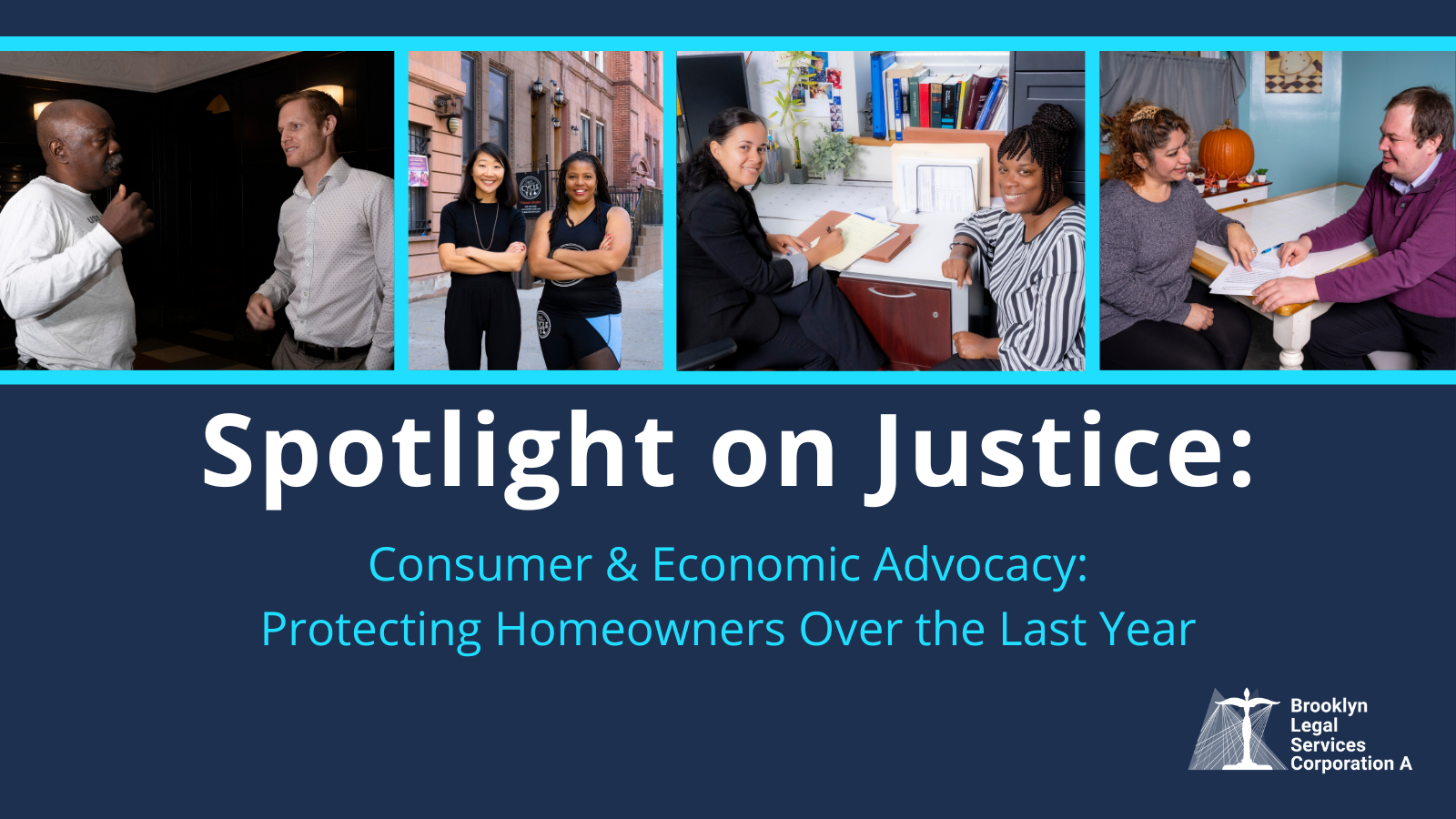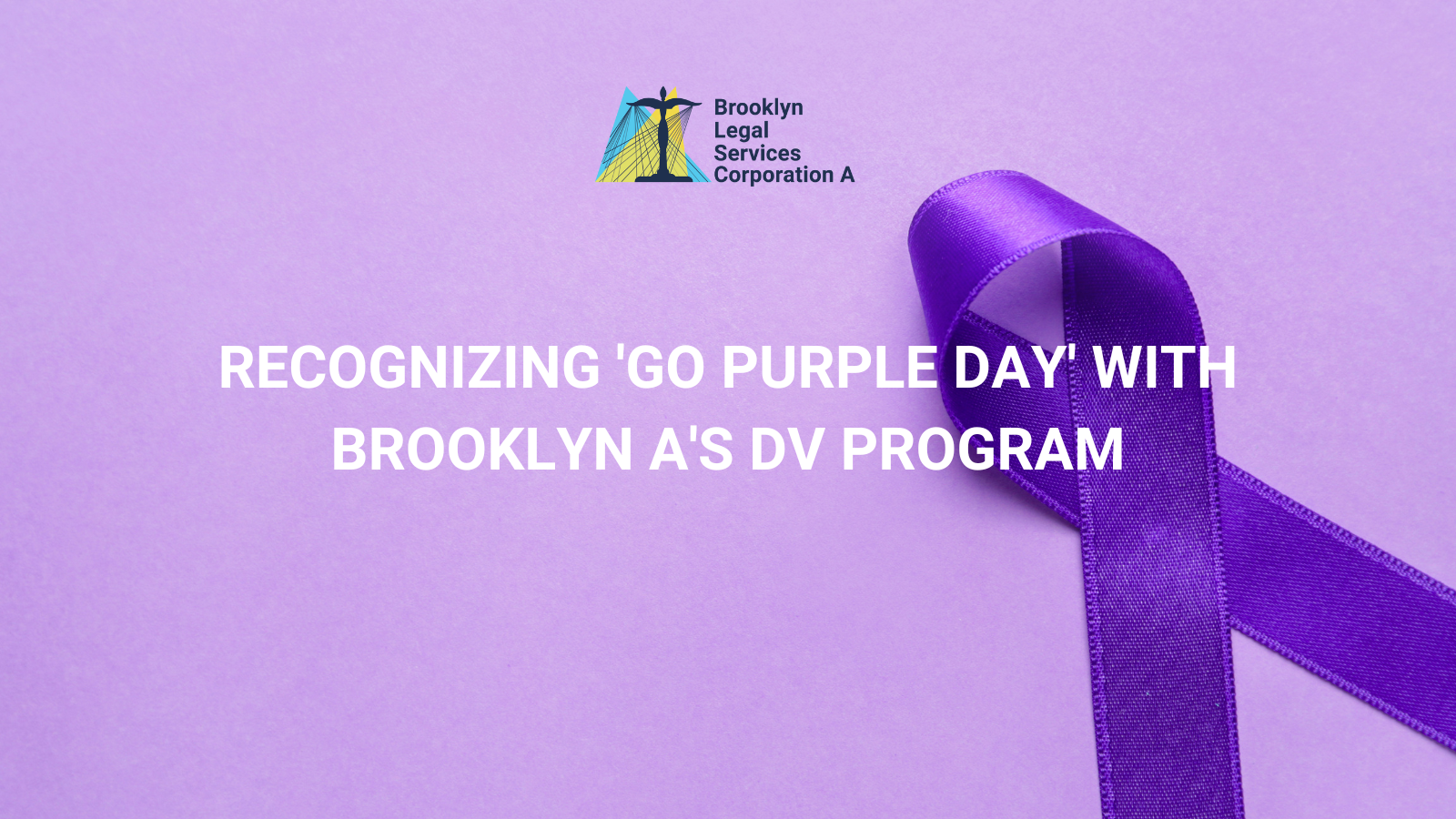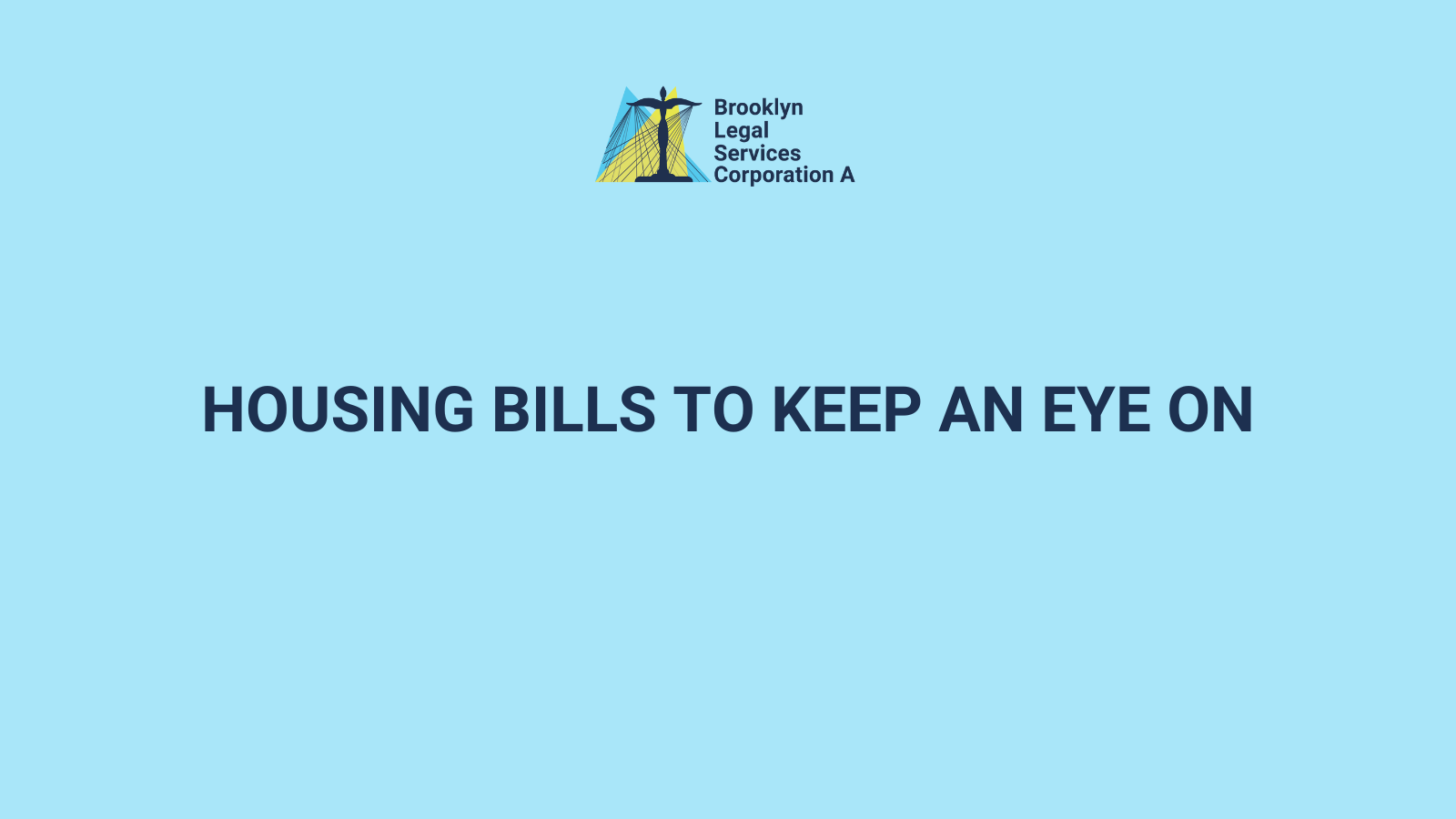By Daniela Adao October is an important month for Brooklyn A’s Domestic Violence Program: it…

CEA: Protecting Homeowners Over the Last Year
By Alex Knipenberg
Homeowners were not immune to the housing shocks of the COVID-19 pandemic. New Yorkers put out of work by sickness or quarantine found it difficult to pay for housing, and mortgage debts began to pile up across the city. Foreclosure data reviewed by the Center for NYC Neighborhoods found the many of the hardest hit zip codes were the same as those most impacted in the 2008 financial crisis—with communities of color seeing the worst impacts. The Consumer & Economic Advocacy Program (CEA) works with homeowners to prevent foreclosure, deal with bankruptcy and prevent or address predatory lending. We worked with hundreds of New Yorkers over the last year to help navigate the confusing ups and downs of federal and state emergency policies.
Both the federal government and the State of New York enacted foreclosure moratoriums early in the pandemic. The moratoriums prevented new cases from being filed and paused proceedings for existing foreclosure cases. While mortgage lenders were unable to take the steps to actually remove people from their homes, many households fell behind on their payments as the shutdowns and sickness kept many people from working, and New York was among the leading states for mortgage defaults in the early years of the pandemic. This created concerns that as things got back to “normal” we would see a foreclosure crisis comparable to 2008—fortunately, that has not materialized, in part thanks to the measures state and federal governments took to keep families afloat.
Still, a year since the moratorium was lifted, the number of foreclosures is going up and homeowners face a variety of lingering challenges in the coming year. Here are a couple of the trends we saw in the last year and issues we expect clients to face in the year to come:
Homeowner Assistance Fund and other government relief
The Homeowner Assistance Fund (HAF) provided homeowners with help on their mortgage payments and other expenses (including property taxes, condominium fees, co-op fees, water bills and more) once the foreclosure moratorium expired in January of 2022. This money was available for people who experienced a COVID-related hardship. It initially provided up to $50,000 in relief (since raised to $95,000) and has assisted nearly 12,500 applicants with $279 million in committed or distributed funds to help keep New Yorkers in their homes.
The program closed to new applicants last year, but existing applications are still being processed. HAF is federally funded and could continue to help New Yorkers if Washington provided more money—homeowners are still able to put themselves on a waitlist to see if additional funds may become available, and Brooklyn A highly encourages anyone who is eligible to sign up.
Another resource has been the “One Shot Deal” emergency assistance offered by New York City. Most commonly associated with renter assistance, this program also helps homeowners struggling to make mortgage or utility payments. While there’s no official maximum amount applicants can receive, we’ve noticed among our clients that the “One Shot Deal” typically provides less money than HAF—but, it’s an active program you can apply for right now.
The Equitable Retention Mortgage Assistance program is another useful resource. Started before COVID-19, this program was launched to help senior citizen homeowners. It offers interest-free loans, with no monthly payments, of up to $25,000 that can cover a variety of different types of mortgages and other housing expenses. HAF recipients are also allowed to apply for this program.
Rising vulnerability to scammers
While there are no official numbers showing a rise in deed-theft or other scams since COVID specifically, we know homeowners in foreclosure or dealing with financial hardship are always more vulnerable to scammers. Because foreclosure filings are public record, scammers have been known to identify and prey on vulnerable homeowners by contacting them and offering financial services to help modify their loan or else get them out of debt. They encourage the homeowner to sign documents that are supposed to help them, but in actuality signs the ownership of the home over to the scammer. These scams are unfortunately very difficult to reverse and can take a very long time in court to sort out, so prevention is the best remedy. We encourage all homeowners to be particularly vigilant of who they are working with for refinancing or other services, make sure the provider is known and trustworthy.
Another predatory practice to watch out for is loan modification services from other states. New York State does not allow service providers to charge for a loan modification, but states bordering ours do. If you are going through foreclosure, you may receive mailed advertisements for these services from companies not based in New York. While this is not technically a scam, it does take money out of the pocket of struggling homeowners who could have gotten that service for free. Like with deed-theft, be sure to take a close look at who you hire for any loan modification services and where they’re based.
“Zombie debt” and rising rates
A common practice prior to the 2008 foreclosure crisis was an “80-20” mortgage. When prospective homebuyers didn’t have enough cash on hand for a downpayment, lenders would offer a second, smaller loan in its place. The larger loan, 80 percent of the home price, looked like a normal home loan with a typical interest rate; the smaller loan, the 20 percent, was often for a much higher interest rate but, confusingly for many homeowners, creditors would not seek payment on that smaller loan for years—sometimes a decade.
Now, roughly a decade since the foreclosure crisis, many homeowners who thought they only had to pay the 80 percent loan have started receiving bills for the 20 percent loan—which has now ballooned with interest, often growing larger than the first loan since homeowners were diligently paying that one for years. The owner of the 20 percent loan, or “zombie debt,” is now able to foreclose on the home. These zombie loans are popping up somewhat recently, so there’s no pattern yet to how these situations conclude—some homeowners settle, some take legal action, others continue to ignore it. If you purchased your home just before the foreclosure crisis and think you might have a zombie loan lying dormant, we recommend you search your home on the Automated City Register Information System (ACRIS) to review the property’s records with the city.
Another concern for homeowners right now is the rising interest rates across the country. In an attempt to reduce inflation, the Federal Reserve has raised interest rates several times over the last year. This means first-time home buyers are facing eye-popping price tags as they look for a house, but it also means those in financial hardship who refinance may end up with a higher rate than they’re paying now. The most effective option for those in a bad enough situation is usually bankruptcy, which, of course, is not ideal, but allows the homeowner to continue paying at their old rate while keeping their home.



